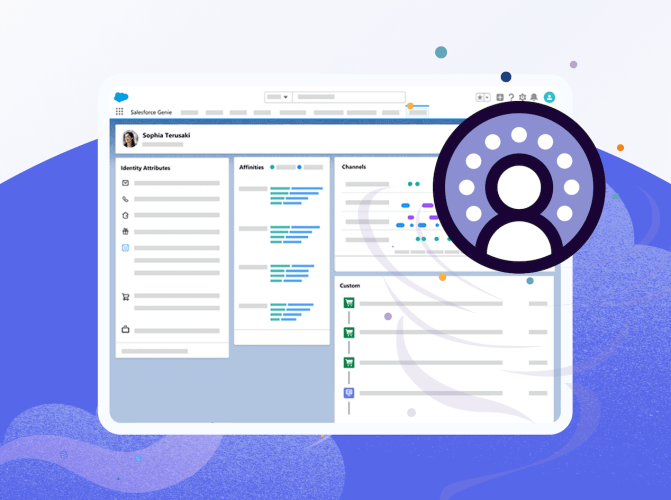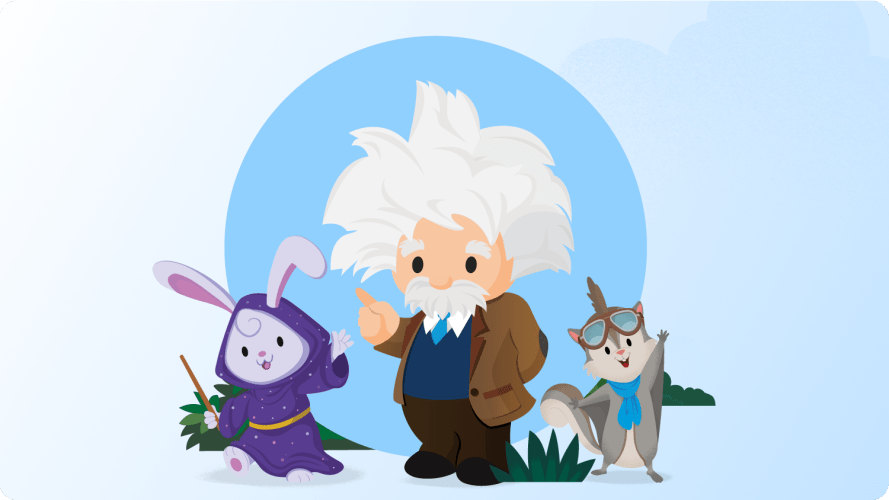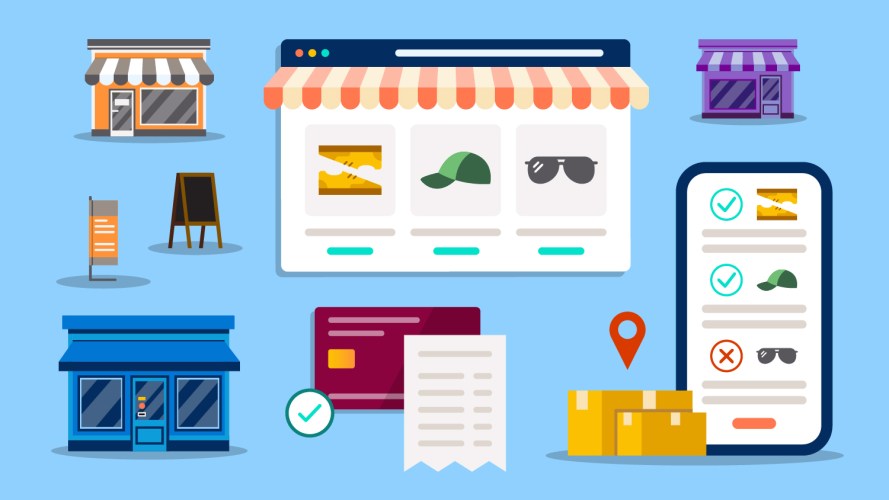How Do You Create a Better Customer Experience? Here’s What Our Research Shows
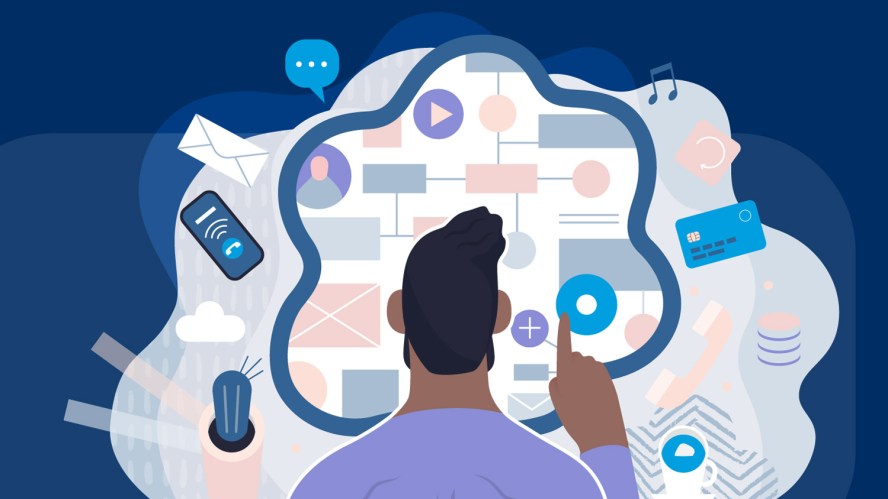
Brands need to build customer relationships and provide experiences that exceed expectations. If not, your connected customer will find a competitor who can.

Vala Afshar
“You are caller number 10; please stay on the line.” A few years ago, a phone message like this from a company was a standard part of the customer experience.
But today, customers expect more. They expect callback options. They expect to open a chat window on your website, send a text message or a tweet, and get a near-instant reply. They expect that you already know who they are when they call, that you’re aware of their most recent order, and that you understand what they need next. They don’t want to repeat their information. And they definitely don’t want to wait.
Customer expectations for good experiences keep soaring. They don’t just want the right product at the right price — they want the full package. In our annual State of the Connected Customer report that surveyed nearly 17,000 global customers, 91% of business buyers and 86% of consumers said the experience a company provides is as important as its products and services.
As products become less distinguishable by brand and price, a great customer experience has become essential for companies to differentiate themselves. Here are some ideas and strategies for building customer relationships that last.
Read the State of the Connected Customer research report
Gain insight into customer experiences and expectations from this 26-page study and analysis from nearly 17,000 consumers and business buyers.



- What is customer experience? Why is it important?
- What’s the difference between customer service and customer experience?
- How to create good customer experiences
- Why customer relationships matter
- The benefits of long-term customer relationships
- What’s a good customer experience?
- How can companies improve customer experience?
What is customer experience? Why is it important?
Customer experience, also called CX, gets thrown around a lot. But how is it defined, and what does it mean?
“Customer experience and service have converged,” said Peter Schwartz, Salesforce senior vice president of strategic planning. “It’s more than call centers and successful responses to problems. It is service opportunities in sales, support, and marketing. Delivering great customer experiences now means providing amazing, almost magical service at every opportunity.”
For example, think back to the last time you called your cable company, filed an insurance claim, or booked a vacation. When you were finished, how did it feel? Was the overall experience easy and enjoyable? Or headache-inducing? What did you think of the company that provided the experience?
What’s the difference between customer service and customer experience?
The customer experience is broader and deeper than just the level of service received. Customer experience is the total perception of the company, interaction by interaction, from the first touchpoint to the last. This may include navigating the website, talking to sales reps over the phone, visiting a store, sampling a product or service, and experiencing an onboarding phase after a purchase.
The point is that at every one of these moments, customers form judgments about whether a company is living up to their expectations. Is that company making it easy and enjoyable for them to do business with? In other words, customer experience is the sum of all interactions.
How to create good customer experiences
Customers have always wanted a consistently good buying experience and the best value they can get. If they’re not happy buying expensive razor blades, they can sign up for inexpensive monthly delivery. If they’re fed up with mediocre hotel chains that don’t offer value, why not try Airbnb?
Technological advances have led to disruption across every industry. Customers have more choice and great freedom to take their business elsewhere if they’re not receiving the experience they expect. In fact, 71% of consumers switched brands at least once in the past year.
And, social media and review websites like Tripadvisor and Yelp give consumers an unprecedented platform — for better or worse — to amplify poor experiences to a much wider audience.
Together, these factors give consumers an upper hand dealing with companies. And service with a smile is no longer enough.
Customer experience isn’t a new concept, but it’s never been more relevant. According to our State of the Connected Customer report, 88% of customers say the experience a company provides is as important as its products or services — the highest it’s been since Salesforce began tracking the sentiment.
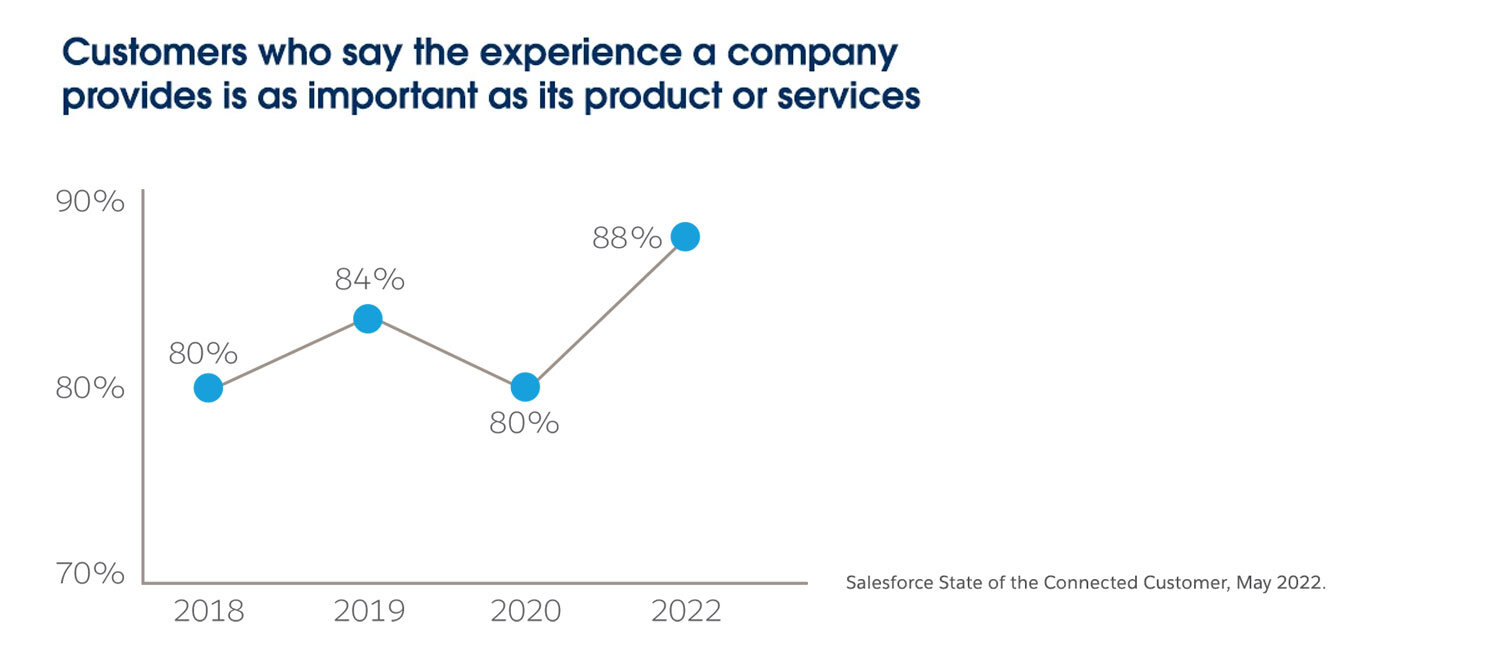
Customer service teams aren’t the only ones responsible. Once mainly concerned with driving new leads, 80% of marketers now feel they lead customer experience initiatives across their organization.
The good news? Customers are willing to pay a premium for great experiences, and not just great products and services. This means businesses have an opportunity to increase revenue by delighting their customers in a way that no one else can.
What is customer engagement?
Get helpful global research to help your business grow.



Why customer relationships matter
If a friend ignores a call, text, or email, it probably doesn’t bode well for the relationship. As with friendships, customer relationships bloom when individuals feel understood. Relationships weaken when customers feel that businesses don’t appreciate their personal preferences, whether that’s remembering they enjoy romantic comedies, or that they would rather be contacted by email.
Lack of trust can also derail a customer’s experience before it even starts. While customer data is an essential part of delivering personalized experiences, customers need to know that if they hand their data over, it will be safe, used legitimately, and beneficial to them.
As questionable business practices make headlines, customers grow ever more selective about the brands they trust. Nearly two-thirds (64%) say most companies aren’t transparent about how they use personal information at a time when trust comes at a premium: 74% of customers say communicating honestly and transparently is more important now than before the pandemic. Businesses that clearly articulate how they use their customers’ data can gain and keep their trust.
How can companies better know and connect to their customers and build more trust? Listen to Seth Godin, marketing guru and founding editor of The Carbon Almanac, and Brian Solis, vice president of Global Innovation at Salesforce, discuss.
A company’s trustworthiness also represents its values. Increasingly, customers consider what a company stands for when deciding whether or not to buy from it. According to the State of the Connected Customer report, 66% of customers stopped buying from a company whose values didn’t align with theirs — up from 62% in 2020.
How do you create a good customer experience?
One challenge for companies trying to get this right is that customer expectations keep soaring. Increasingly, customers want experiences that are connected, memorable, and differentiated. We’ll talk through examples of each.;
Our research shows that 85% of customers now expect consistent interactions across departments when they engage with a company. For example, in a customer’s mind, a service agent should know the details of any recent ecommerce transaction they made, and engage accordingly. Not doing so risks losing customer trust: 55% of customers lose trust in companies when there’s a lack of consistency across touchpoints.
U.S. Bank connects all of its employees with a single, unified database of customer information. The solution also allows the bank to turn raw data into high-value insights, which can be used to drive decision-making, and personalize its financial offerings for customers.
Customer relationships had previously been built within individual business units such as banking, mortgages, investments, and payments. This led to a disjointed and often unsatisfactory customer experience. By approaching customer relationships as a single business, employees now have an aligned and complete view of their customers’ interactions with the entire organization. This creates a unified customer experience across all business lines and strengthens relationships with customers.
Customers now have an easier time accessing financial services across all channels, including mobile devices, personal computers, ATMs, and 3,000 branches across 25 states.
A customer experience strategy builds relationships
It’s not enough for businesses to provide a personalized customer experience. They need to stand out from other companies setting a high bar. And they need to organize around the customer. While research from more than a thousand global senior leaders in a study from Harvard Business Review Analytic Services found that customer experience is a top-five business priority, few feel they’re presently doing it well.
One European brand seeing results is Brunello Cucinelli, which quadrupled its ecommerce revenue after it adopted its customer experience strategy, culture, and solutions. The high-end clothing brand found maintaining its personal touch challenging for digital shoppers. It needed to bring the personalized experiences it was known for in its stores to online commerce.
The company’s solution was to implement what its leaders have dubbed “graceful technology.” This centralized system builds stronger, more personal relationships with customers. Featuring easily accessible customer order histories and automated workflows, the system helps store managers expedite online customer service needs. Employees can spend more time building relationships with shoppers. Customers can receive in-store service regardless of where they connect.
Brunello Cucinelli has successfully translated the luxury experience to the digital realm. And in the process, set new customer experience standards for the mass market.
The benefits of long-term customer relationships
Customers want businesses to treat them like individuals. They want tailored engagement based on their unique needs. While niche brands were the first to offer differentiated customer experiences, this is now the expectation people have of mass-market companies as well.
Take Piedmont Healthcare, for example. With the U.S. healthcare industry shifting to a value-based model, the healthcare provider was under pressure to improve patient outcomes and meet growing patient expectations with more personalized medicine. Piedmont Healthcare realized it needed to embrace technology to help it engage with patients and assist them to get easier access to care. They needed to personalize how the company connects with them.
The organization’s solution was to implement an integrated cloud-based system to capture patients’ information and create comprehensive patient profiles. It gives the company better insight into its relationships with both patients and physicians. They can use data-driven information to create high-quality, personalized marketing communications for both groups. Sales staff can also use the system to deliver personalized messages to physicians at scale, track engagement, nurture leads, and follow up with greater speed.
What’s a good customer experience?
With success stories such as these making the market acutely aware of what’s possible, 56% of customers expect offers to always be personalized. Salesforce’s Peter Schwartz believes businesses will eventually use artificial intelligence (AI) to achieve a better customer experience. He wrote that it can turn a “comprehensive trove of data into insights that can anticipate customers’ needs and act as their digital assistant.”
He uses the example of a frequent business traveler. They walk into a hotel room to be greeted by their favorite song playing, photos of their family in digital frames, and an email asking if they’d like the Caesar salad, without croutons, they last ordered from room service. The temperature and lighting are set to their preferred levels. And when they turn on the television, it suggests a movie they’ve yet to see, starring their favorite actress. A rental car of the model they’re considering buying is available at the hotel.
“This isn’t marketing to a category of consumers,” Schwartz said. “It’s applying AI and all the customer data to cater to the needs of a single individual, which is much more powerful.”
Glen Hartman, senior managing director of digital transformation at Accenture Song, has also described the potential for unprecedented levels of customer immersion. “Say you usually do your grocery shopping on a Saturday morning. You use the store’s app, you belong to its loyalty program, and perhaps you’ve even attended a do-it-yourself cooking class there. So, they know you well,” he said in an interview.
“When you walk in the door, the store knows you’re there through location technology. Delivering a real-time personalized experience in this context could mean the store suggesting a recipe based on your shopping list you created using the store app.
“They could even show you a video of what the recipe looks like, right on your phone. Then they might upsell you on some other things to have a great dinner that night. That’s a successful shopping trip.”
Hartman stresses that people also expect the brands they love to understand their wants and needs in context. Otherwise, it’s easy to miss the point and end up alienating customers. As he pointed out, if that same customer came back with the goal of quickly picking up some medicine for a sick child, for instance, and was offered all kinds of coupons and additional ingredient suggestions, their experience would clearly be less than optimal.
How can companies improve customer experience?
Shelves of books are devoted to answering this question. However, the advice can be distilled to two pieces of wisdom:
- Give your business a customer-first mindset. Put the customer at the heart of your business — from marketing to point-of-sale procedures and after-sales follow-ups. Make customer obsession principles part of executive conversations and business planning during pipeline reviews, inside shareholder meetings, and throughout business development. Ask what their needs are, what’s driving their decision-making, what their goals are, and what they’re feeling.
- Get started with automation and AI. Get clear on the specific business problems you want automation and AI to solve. Once you’ve defined a specific use case, consider how existing workflows would be impacted and who would need to be reskilled.
Customers are open to companies using AI to improve the experience they receive, including chatbots, text and voice analytics, and more. In fact, AI adoption is surging from service teams and beyond.
Connected customers are knowledgeable and technology-aware — and they have limited patience for brands that can’t keep up. Delivering outstanding experiences isn’t a luxury; it’s an expectation. And those that do it well will be rewarded with customer loyalty and repeat business.
Learn why customer engagement will never be the same
We asked nearly 17,000 customers to share what they want and what they expect.




